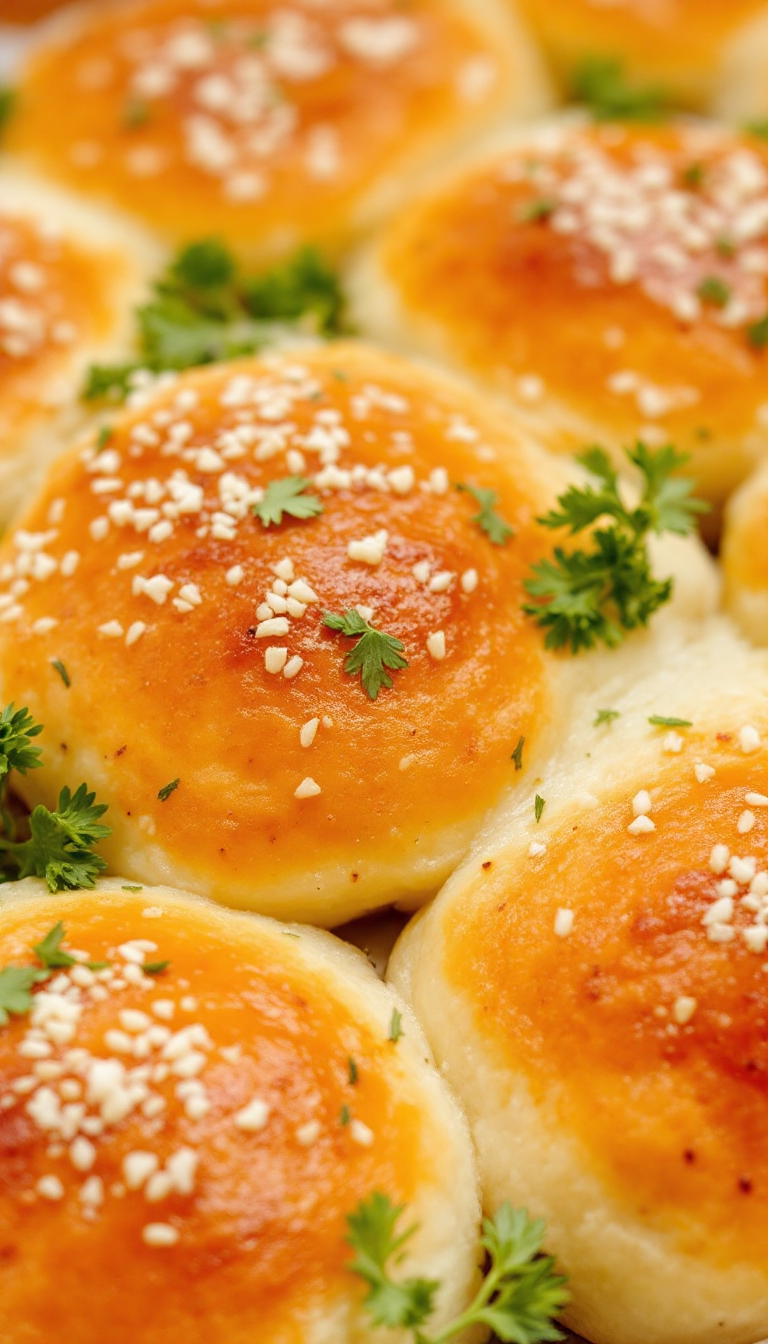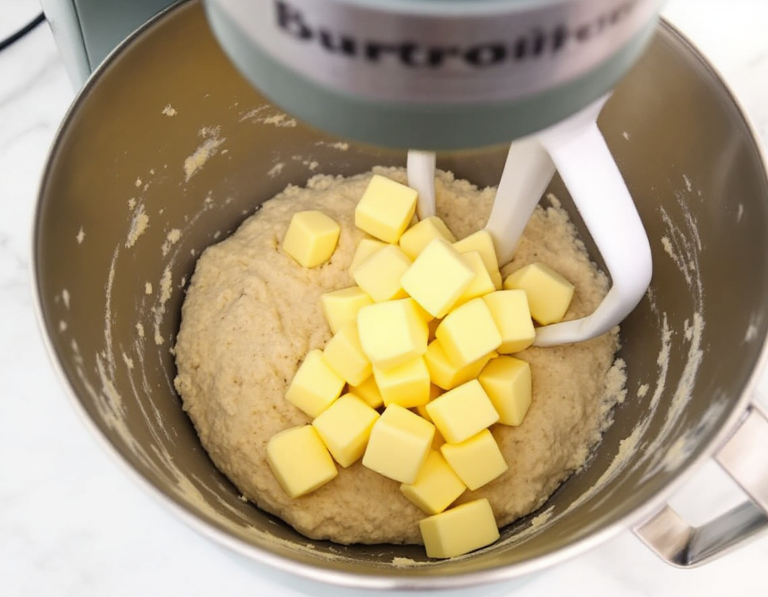There’s something magical about waking up to the aroma of freshly baked bread, isn’t there? These overnight dinner rolls, soft as a cloud and just a tad sweet, are like a warm hug on a cold morning. It’s the kind of simple pleasure that, honestly, feels a bit like a small victory.
Steps
- Mix the Dough: Combine all ingredients except for butter in a stand mixer bowl with a dough hook. Begin with the least amount of milk and increase if necessary. Knead for 10-15 minutes until the dough pulls away from the bowl sides.
- Incorporate Butter: Add room temperature butter cubes gradually while the mixer is running. Continue mixing at medium speed for 10-25 minutes until the dough passes the window-pane test.
- Refrigerate Overnight: Shape the dough into a round and place it in a lightly oiled bowl. Cover and refrigerate for 10-18 hours or overnight.
- Shape the Rolls: On a floured surface, divide the dough into 12 pieces of 60 grams or 9 pieces of 80 grams each. Shape each portion into a smooth, seamless ball.
- Proof the Rolls: Arrange the rolls in a greased 9×9-inch baking pan. Cover and let them rise in a warm area at around 78°F/26°C until they double in size and appear puffy.
- Bake the Rolls: Preheat the oven to 355°F/180°C. Bake the rolls for 15-20 minutes until they turn golden brown on top.
- Finish and Serve: Immediately brush the hot rolls with melted butter and sprinkle with flaky salt. Serve them warm for the best flavor and texture.
Ingredients
- 370 grams of bread flour
- 20 grams of sugar
- 8 grams of instant dry yeast
- 8 grams of salt
- 185-210 grams of whole milk
- 70 grams of eggs (1 whole egg + 1 egg yolk)
- 65 grams of unsalted butter, softened
- Melted butter for topping
- Flaky salt for topping
FAQ
- Can this recipe be completed in one day?
- Yes, it can! Instead of placing the dough in the refrigerator, allow it to rise in a warm area (around 78°F/26°C) until it doubles in size. Then proceed to shape the dough into rounds, let them rise again until puffy, and bake as directed.
- What kind of flour should I use for this recipe?
- It is best to use bread flour or strong white flour with a protein content of 13-15%. Adjust the amount of liquid, such as whole milk, based on the specific flour you’re using, as different protein levels require different amounts of liquid.
- Is it possible to substitute some bread flour with whole wheat flour?
- Yes, you can substitute some bread flour with whole wheat flour. Aim for a 50/50 mix for a good balance of flavor and dough manageability. Be sure to add extra liquid if needed, as whole wheat flour absorbs more moisture.
- What is the window-pane test?
- The window-pane test checks gluten development in the dough. Stretch a small piece of dough thinly between your fingers. If it forms a translucent film without tearing, the gluten is well-developed, indicating the dough is ready.
- Can I freeze the dinner rolls?
- Absolutely! After cooling the rolls completely, wrap each one individually in plastic wrap, label them, and freeze for up to 2-3 months. When ready to serve, thaw the rolls and reheat them in the oven at 350°F/180°C for 3-5 minutes.
Tips
- For the softest, fluffiest rolls, make sure your butter is soft and at room temperature when adding it to the dough. Incorporate the butter slowly, one cube at a time, to ensure it mixes evenly.
- If you’re using whole wheat flour instead of bread flour, remember to add a bit more liquid as whole wheat flour absorbs more moisture. Aim for a 50/50 mix of whole wheat and bread flour for a balance between flavor and ease of handling.
- To ensure your dough has developed enough gluten, perform the window-pane test. Stretch a small piece of dough gently; it should form a thin, translucent membrane without tearing.
- For best results, allow your dinner rolls to rise in a warm environment, ideally around 78°F/26°C, until they’ve doubled in size. This will help achieve a light and airy texture.
Equipment
- Stand Mixer with Dough Hook Attachment – Essential for kneading the dough efficiently.
- 9×9-inch Baking Pan – Used for arranging and baking the rolls.
- Kitchen Scale – Ensures accurate measurement of dough pieces.
- Oven Thermometer – Helpful for ensuring your oven is at the correct baking temperature.
- Dough Scraper – Useful for dividing and shaping the dough.


